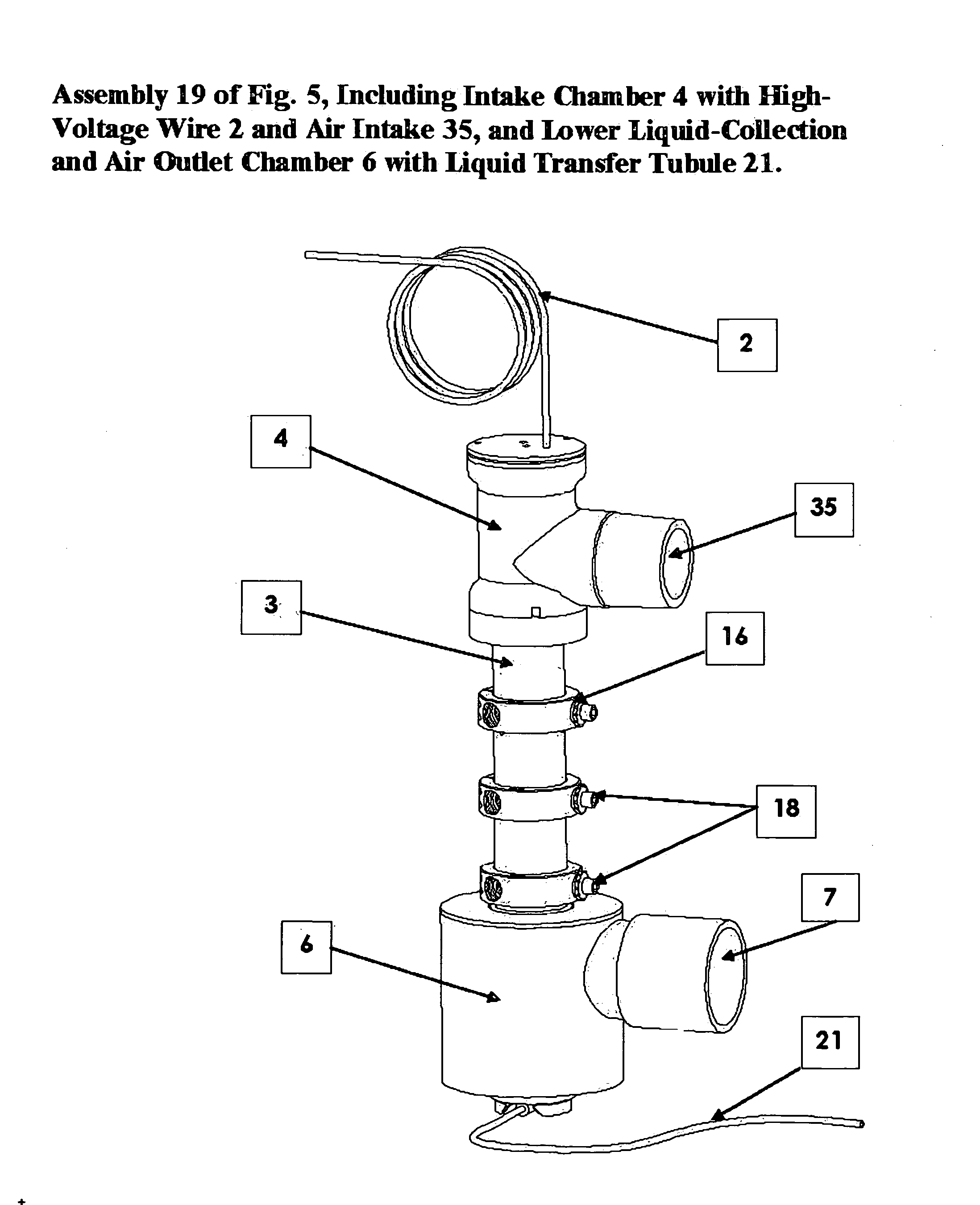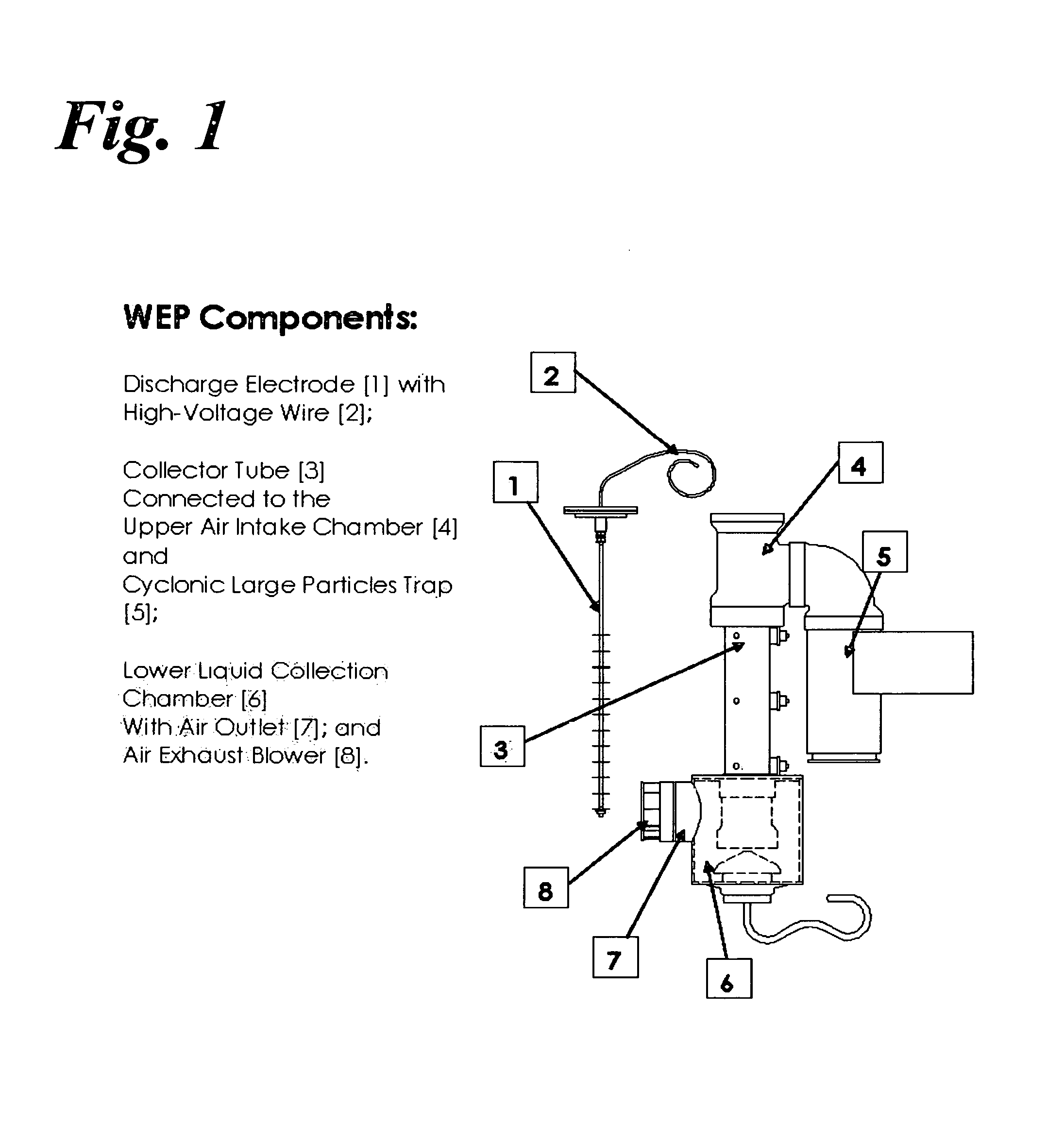Aerosol collection apparatus and method
a collection apparatus and anthrax technology, applied in the field of aerosol collection apparatus and method, can solve the problems of serious shortcomings of these collectors, inability to accurately detect anthrax bacteria, and inability to accurately measure the effect of anthrax bacteria, so as to achieve low pressure drop, high air flow through the sampler, and low power consumption
- Summary
- Abstract
- Description
- Claims
- Application Information
AI Technical Summary
Benefits of technology
Problems solved by technology
Method used
Image
Examples
example 1
[0051]For collection efficiency measurements, we use suspended 1-micron fluorescent beads obtained from Duke Scientific Corporation, Palo Alto, Calif. 94303. The fluorescent beads permit direct measurements with the aid of a fluorometer of the amounts of particles captured in the collection medium. The concentrations of particles in the sampled air are measured with the aid of a reference filter and their variations within our 3,000-liter test chamber are monitored with an Aerodynamic Particle Sizer [APS] instrument.
The described system was assembled, tested, and fine-tuned as follows:
[0052]1. The following test procedure was worked out:[0053]a. Circulate the contents of the test chamber through a HEPA filter for 10 minutes to reduce the particles count to a negligible value as measured with our APS [TSI Model 3310 Aerodynamic Particle Sizer] instrument.[0054]b. With the fans in the test chamber turned on, inject into the chamber about 1.2 ml of a standard suspension of 1.0-micron f...
PUM
| Property | Measurement | Unit |
|---|---|---|
| angle | aaaaa | aaaaa |
| power consumption | aaaaa | aaaaa |
| size | aaaaa | aaaaa |
Abstract
Description
Claims
Application Information
 Login to View More
Login to View More - R&D
- Intellectual Property
- Life Sciences
- Materials
- Tech Scout
- Unparalleled Data Quality
- Higher Quality Content
- 60% Fewer Hallucinations
Browse by: Latest US Patents, China's latest patents, Technical Efficacy Thesaurus, Application Domain, Technology Topic, Popular Technical Reports.
© 2025 PatSnap. All rights reserved.Legal|Privacy policy|Modern Slavery Act Transparency Statement|Sitemap|About US| Contact US: help@patsnap.com



